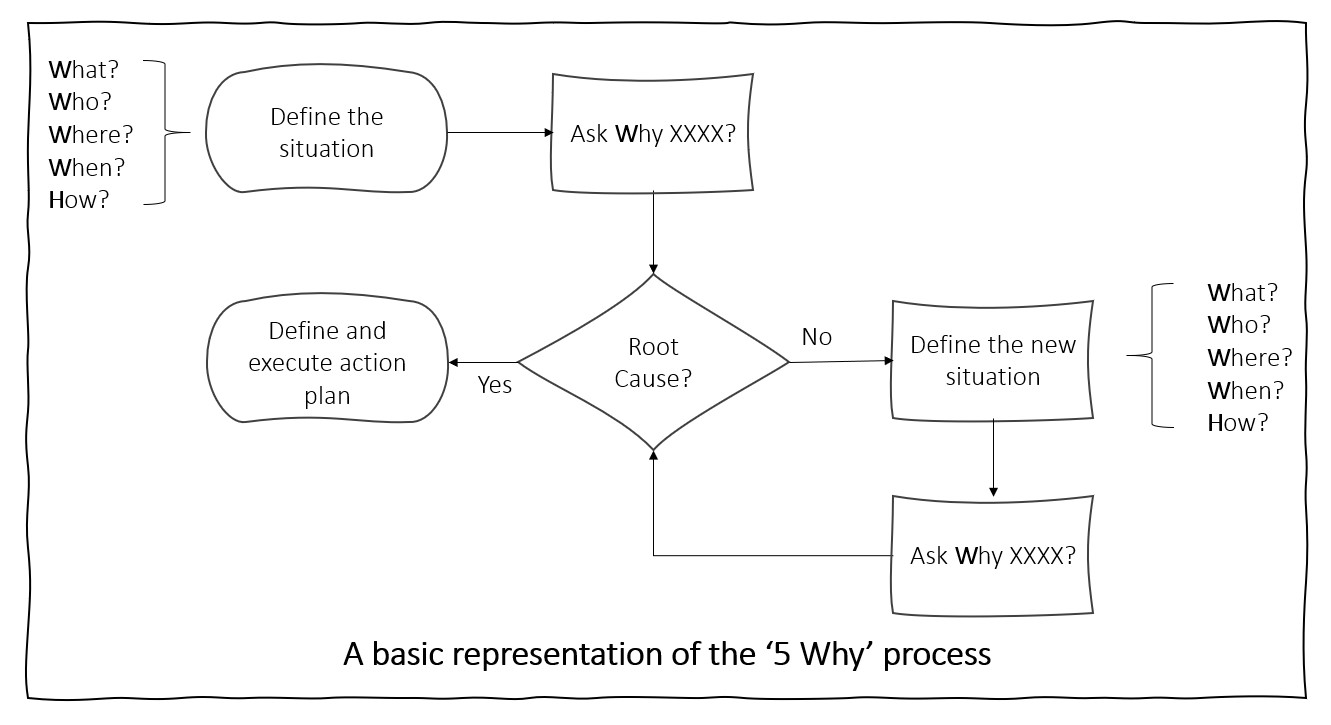Using the 5 Why method with Fraction ERP
When we developed Fraction ERP we wanted to build in some of the best ideas we had been exposed to whilst running manufacturing operations. I (Giles) had been introduced to the 5 Why technique during a grilling from Toyota when my wiring harness production lines weren’t quite meeting the grade… (we got there, by the way!)
5 Why has been a staple tool of many sectors of industry and for obvious reasons. If you have a problem in your business then this quick to apply method can help you make fundamental shifts in both productivity and quality.
What exactly is ‘5 Why’?
5 Why is a root cause problem solving approach based on asking a series of questions designed to get past the symptoms that you are currently facing. If done right, you can quickly find a fundamental change that is in under your control. Often these changes are low cost, simple and quick.
This approach can often be overlooked because of its apparent simplicity; why do adults related complexity to effectiveness? In essence, all you have to do is ask a bunch of ‘why?’ questions and find the root cause of your problem. This is the same approach that three year olds use to find out the meaning behind everyday actions and it often drives parents mad. But, there is a wisdom to this approach. Unfortunately, this wisdom can often get lost through poor application and a failure to adopt the method.
The diagram below gives the basic overview of the 5 Why process, which I have included an additional set of prompts, known lovingly in the engineering world as 5W1H.

What is 5W1H?
As you can see from the diagram 5W1H stands for:
- Who
- What
- Where
- When
- Why
- How
(Five prompts beginning with W and one with an H.)
If we use it in conjunction with the 5 Why approach we have a powerful approach to dig past the symptoms and find a root cause.
Many people fail to get meaningful results from their 5 Why questioning because they just ask the question “why?” and hope that magic will happen. This is often too vague and doesn’t produce results.
Using the rest of the 5W1H prompts can allow you to find out what is really going on and then ask a really focused “why?” question. For example, “why does the programming error only happen on the 2pm to 10pm shift?”.
Note - The specific why question is shown in the diagram as ‘Ask Why XXXX?’.
Driving down to a root cause
If you can give your team a specific enough question then you can often find that they can answer the question. Keeping the question vague often doesn’t produce results and just makes the exercise frustrating for everyone involved.
You may also find that the questioning gets more specific, as you progress, and then more general and fundamental as you get to your root cause. You don’t necessarily need to perform five ‘steps’ with your questioning, but you definitely need to get past the first couple of questions to get away from the symptoms you are experiencing.
A good way to know if you have reached a root cause is when:
- You have an ‘aha!’ moment (when you realise that the cause is now frighteningly obvious!).
- The solution to the root cause is in your control and is simple in nature.
5 Why in Fraction ERP
We’ve built the 5 Why approach into the NCR module of Fraction ERP.
You can see that this is incorporated into the form shown below.

If you want to see how this looks ‘in action’ then check out the NCR module video below.
I hope that this article has given you some food for thought about using the 5 Why approach to removing your production problems properly from your business. With a little practice this approach can be mastered and deployed deftly to produce significant opportunity and results for your business.
If you want to learn more about Fraction ERP then sign up for a free demo using the form below, or view our video walkthroughs here.